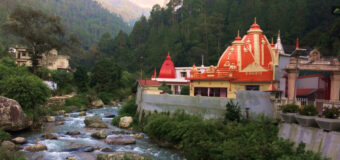Football is not merely a sport. It is a religion in many countries across the world. Meanwhile, in Brazil, it is everything. Essentially, football is a part of Brazil’s culture and tradition. In fact, it is a shared passion that has been passed down through the ages.
If you want to visit Brazil and wander through the streets, a good idea is to check out some of the most legendary stadiums in the country. In fact, by visiting those stadiums, you will have some of the most thrilling experiences ever.
Apart from that, these stadiums reveal a great deal about the country’s architecture, history, and politics. Also, you will learn a great deal about the communities that surround them.
Therefore, read on to know more about stadium tours in Brazil. Also, you will learn about what to expect in those stadiums.
Why Stadium Tours In Brazil Are Important?
It does not matter whether you are a football fanatic or merely curious about Brazil. You already know the significance of football in this country. Hence, you cannot afford to miss out on the stadium tours in Brazil.
By visiting these stadiums, you will experience a wealth of things that go beyond simply the history of football.
Imagine historic Brazilian arenas turn into futuristic venues. Here’s why stadium tours should be on your travel checklist to Brazil.
1. The Maracanã: More Than A Monument
You can’t talk about football in Brazil without mentioning the Maracanã. Initially, the stadium opened back in 1950. This iconic Rio stadium has seen it all – from World Cup finals to Olympic matches.
Moreover, it got a major facelift for the 2014 World Cup and the 2016 Olympics. Interestingly, it still holds the same energy. In fact, it’s a symbol of football for many Brazilians.
In May 2025, it was chosen as one of the main venues for the 2027 FIFA Women’s World Cup, proving it’s still a big part of football’s future, not just its past.
Legendary midfielder Formiga, Brazil’s most capped player, called it “a stadium that moves the soul.” This is a fitting tribute to a venue where Pelé, Zico, and modern stars alike have written history.
The tour includes locker rooms, a pitch-side walk, the press gallery, and a museum that tells the story of Brazilian football through trophies, jerseys, and multimedia installations.
The Maracanã hasn’t always been about football. It’s also been the site of protests, church gatherings, and massive shows. For instance, Beyoncé, Paul McCartney, and a bunch of others have played here. In fact, it is a lot more than merely goals and final whistles.
2. Flamengo’s New Era: Cidade Maravilhosa
2025 has been a big year for Flamengo. One of Brazil’s most famous clubs is heading into new territory – literally. After decades tied to the Maracanã, the club is now planning a home of its own. However, not everyone’s on the same page about it.
After decades of playing home matches at the Maracanã, the club announced plans to build a new stadium in Gasômetro, Rio’s industrial port zone.
Dubbed “Cidade Maravilhosa” (The Marvellous City), this new complex is set to include a year-round interactive museum. Also, there will be a skywalk with panoramic city views and community-focused design. Moreover, it will be complete with skate parks and public art spaces.
The project reflects a global trend: stadiums as multi-purpose attractions. Tours here (once the stadium opens) will allow visitors to explore Flamengo’s legacy in immersive ways.
Apart from that, it will feature VR match simulations and behind-the-scenes coaching sessions. It’s part football, part urban rebranding.
Planning a trip? Before you go, use the tool BrazilEVisa.com eVisa status lookup to confirm your visa status and review entry requirements. The site also offers helpful tips on getting around the cities, especially useful if you’re heading from central Rio to newer cultural spots like Gasômetro.
3. Pacaembu: A Heritage Site Revived

Not every stadium story is about building something new – some are about bringing the old back to life.
Meanwhile, in January 2025, São Paulo’s Pacaembu reopened after three years of renovation. Now, it is more of a mix of old and new. While it is maintaining its 1940s Art Deco look, it is also incorporating modern touches to make it accessible for new generations.
However, the old south stand is gone. Now, you will find a five-story building with a food hall, exhibition spaces, and rooftop seating. It’s a big shift, but it still feels connected to the stadium’s roots.
The Museum of Football, tucked inside the complex, has also gotten a refresh. However, it now includes hands-on exhibits that dive into football’s deep ties with race and politics. Also, you will know how cities like São Paulo have changed over time.
The tour itself is more than just a walk around the pitch. Visitors can replay historic matches using augmented reality, walk through the original athletes’ tunnel, and grab a coffee on the roof with a view over downtown São Paulo.
It’s football, sure – but it’s also about the city, the people, and the stories wrapped up in the game.
What To Expect From Stadium Tours In Brazil In 2025?
Stadium tours in Brazil now go way beyond the basics. You’ll walk through locker rooms, press areas, and sometimes right up to the pitch. Many have small museums with club history, old gear, and even some surprising architectural details.
Some use VR or touchscreens to replay famous matches. Others host events like concerts or food fairs. Accessibility has improved, too – newer stadiums are better equipped for all visitors.
And more and more, these places are being used for community stuff – youth programs, free clinics, local clean-ups. They’re part of everyday life, not just match days.
Final Whistle: Experience Culture In Every Corner
In Brazil, football is a religion. This means that the stadiums are temples. These venues do not speak merely of the sport. Rather, it says a lot about memories, identity, and spectacle. Hence, after experiencing stadium tours in Brazil, you will get to know more about the local psyche.
With time, these sporting areas are adapting. For instance, some of them are rising while others are getting reborn. Therefore, by visiting these stadiums, you will see history getting reshaped with time.
Read Also:














